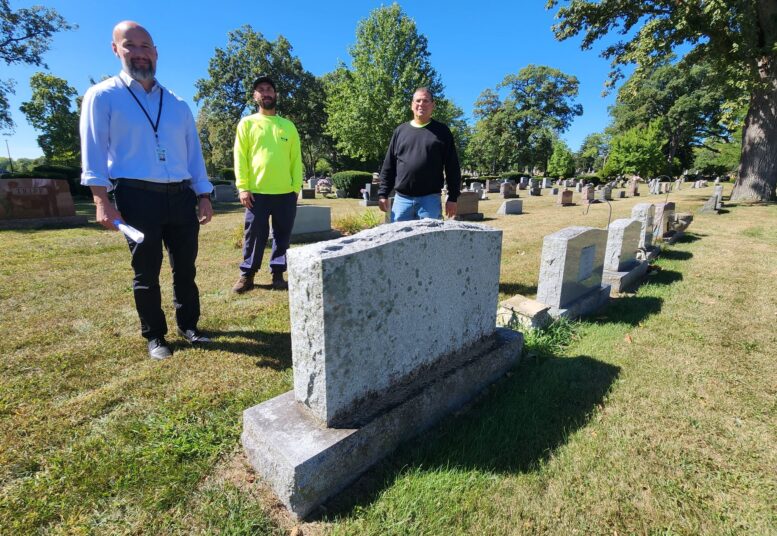By JAN McLAUGHLIN
BG Independent News
Bowling Green officials are trying to get a grasp of how much available property the city has left in a highly-sought after location – Oak Grove Cemetery.
To do that the city is using new technology to map the underground of the old cemetery.
Oak Grove has been the final resting place for many local residents since the late 1800s. An estimated 10,000 people are interred there, according to Denny Guyer, the cemetery coordinator.
To determine how many more people can be laid to rest there, a ground penetrating radar system is being used.
“We want to verify the orientation of the burials and make sure our maps are accurate,” BG Public Works Director Mick Murray said last week as he looked over the cemetery.
The benefits of the GPRS are two-fold – to show where there are open plots available for future burials, and to show where plots are already in use so they aren’t accidentally disturbed.
Yes, that has happened when cemetery staff have been digging a new grave and have hit an old grave where it wasn’t recorded and where no headstone had been placed.
“It’s very rare, but it has happened,” Murray said. “And I don’t want it to ever happen again.”
The GPRS mapping is showing individual open plots in the middle of rows, and identifying exactly where rows end.
There are, however, limitations to what the GPRS can register underground. The pine boxes used in earlier burials don’t show up – and in most cases are long gone.
“So much of that is disintegrated by now,” Guyer said of the gravesites in the older portions of Oak Grove. “We don’t want to disturb those.”
Since the late 1940s, burials have been required to use cement vaults, which are identifiable by the radar system.
In addition to searching for open plots with the GPRS, in some instances the city is also reaching out to owners of unused spaces.
“There are a lot of plots sold that may never be used,” Murray said. Families often tend to buy plots in bulk, with the expectation that future generations will be buried there as well.
“A lot of those are going unused. They get buried somewhere else, and it gets forgotten,” he added. “There’s an opportunity to buy them back.”
As Murray stood in Oak Grove last week, he lamented the cemetery’s landlocked location. The 22 acres are bordered on all sides by property owned by Bowling Green State University.
“We’re trapped. We’re landlocked. I would love to buy this parking lot from the university,” Murray said, glancing at the university lot to the east of the cemetery.
The city owns some acreage to the west of Bowling Green, at the corner of West Poe and Green roads, that was reportedly being considered as a site for more cemetery space. However, it was mentioned last month that the acreage may be used for other purposes.
As of last week, Guyer estimated Oak Grove Cemetery had about 200 open spaces available, with 78 of those for infants and children. Murray asked that people not flood the city’s public works office to reserve burial plots in bulk.
But the demand for space is being eased as more people – up to 50% now – select cremation, Murray said. The standard burial plot of 8 feet by 42 inches can hold up to five cremated remains from a family, Guyer said.
The city is also considering the construction of a columbarium, a building with niches for funeral urns to be stored.
The huge oak trees in the cemetery pose another dilemma for the city.
“We wanted to preserve these oak trees,” said Dominic Picciuto, equipment operator at the cemetery. “They’re old, they’ve been through a lot.”
Plus their massive roots take up a lot of space, and in some cases are at risk when it comes time for a reserved plot to be used.
“We’re cutting roots to get in some of the plots when they have already been sold,” Picciuto said.





